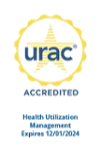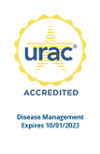Since its inception in 1992, the 340B Drug Pricing Program has vastly altered the pharmacy management landscape within Medicaid agencies across the United States. The overarching goal is to combat the ever-rising costs in healthcare by establishing reduced prices for outpatient drugs offered by drug manufacturers to eligible health care organizations participating in the 340B Drug Pricing Program.
Before the creation of the 340B Drug Pricing Program, Congress created the Medicaid Drug Rebate Program in 1990 to provide a mechanism for State Medicaid agencies to control the costs associated with pharmaceutical drugs for outpatient services. The Medicaid Drug Rebate Program required drug manufacturers to enter into agreements with State Medicaid agencies to provide discounted pricing through rebates in exchange for covering the pharmaceutical drugs within the State Medicaid program.
Initially, the process of managing pharmaceutical drug rebates across drug manufacturers for State Medicaid programs required minimal administrative effort, as all claims paid for the associated drugs were eligible for the rebate payment, to be paid by the drug manufacturers to a State Medicaid program.
As part of the Veterans Health Care Act, Congress introduced the 340B Drug Pricing Program to continue efforts to reduce drug costs to qualified healthcare entities serving low-income communities. This created an avenue to fund programs focusing on more comprehensive healthcare services for those communities most affected by rising healthcare costs. Participation in the 340B Drug Pricing Program is voluntary for healthcare organizations that meet the eligibility requirements. The Health Resources and Services Administration (HRSA) manages all aspects of the program from enrollment, certification, annual recertification, and adherence. Upon approval of program participation by HRSA, the covered entity must designate themselves as a participant in the 340B Drug Pricing Program and HRSA maintains a “exclusion file” of participants available for public viewing.
The 340B Drug Program requires drug manufacturers to sell pharmaceutical drugs at a discounted price, known as the ceiling price, to enrolled participants. The 340B ceiling price is calculated in the same manner as the drug rebate amount, which equals the average manufacturer price for the drug without the unit rebate amount for the drug. When dispensing the 340B drug to a Medicaid beneficiary, the billable amount to the state Medicaid agency should not exceed the actual acquisition cost paid to the drug manufacturer by the 340B participant. Since the discounted price for the 340B drug is passed through to the Medicaid agency by the participant, the drug manufacturer is not required to honor the drug rebate amount associated with the Medicaid Drug Rebate Program of 1990. State Medicaid agencies are therefore tasked with preventing duplicate claims by excluding pharmaceutical drug claims dispensed by 340B participant in their drug rebate invoices sent to the drug manufacturers for payment.
Although the 340B Drug Pricing Program has significantly benefited the healthcare community, it has come at a cost to Medicaid with the added administrative burden required to prevent these duplicate claims. A duplication occurs when a drug manufacturer provides a covered entity with a 340B ceiling price and the State Medicaid agency also submits a rebate request to the drug manufacturer for the same drug. The primary mechanism used by state Medicaid agencies to avoid duplication is the Medicaid exclusion file maintained by HRSA. The Medicaid exclusion file is a list of covered entities authorized to dispense 340B-covered drugs to Medicaid beneficiaries at the ceiling price. Participant eligibility is published on a quarterly basis, which can lead to inaccurate coverage determination if the rebate submission process does not account for the publication schedule of the Medicaid exclusion file. This process is further complicated by the requirement that participants in the 340B Drug Program must ensure the discounted drug price is only given to the fee-for-service population and not given to managed care organizations or contract pharmacies, which have grown significantly since the inception of the 340B Drug Pricing Program.
Some state Medicaid agencies have dealt with these issues by adopting a practice of supplementing the Medicaid Exclusion file with claim-level identifiers specific to their program or maintaining their own modified Medicaid exclusion file to reduce the risk for duplicate discounts. The 340B Drug Pricing Program is vital to many safety-net healthcare providers, but the complexity of the program presents numerous barriers that must be overcome to ensure Medicaid is fully utilizing the program as designed. The difficulty in managing the program will only become more burdensome to Medicaid as environmental variables continue the growth patterns seen in recent years.
With millions of healthcare dollars at stake, it is imperative these cost reduction programs continue their evolution to ensure rebate funds are appropriately distributed to maximize the opportunities for reinvestment back into the community. State Medicaid agencies and HRSA will need to engage companies in the private sector to strengthen their ability to track and monitor the adherence of program policy through targeted audits driven by anomalies discovered during routine evaluations of pertinent claims data available on Medicaid beneficiaries. Utilizing an enhanced auditing strategy, coupled with continued cooperation and transparency of all parties involved in the 340 Drug Pricing Program will ensure the underserved and at-risk populations can continue to have access to required medication therapies at an affordable price in the future.







U3GM Blog Post Comments